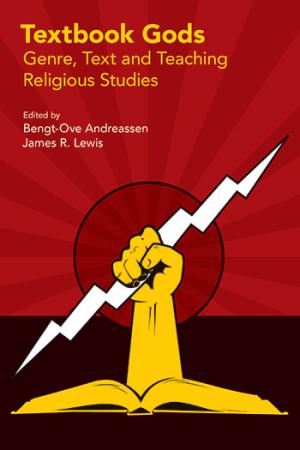Resources

Click Here for Book Review Abstract: In recent years there has been a renewed interest in textbooks, partly because they have maintained their position as an important genre. Not too many years ago – and perhaps currently as well – many considered textbooks outdated or archaic compared with technological advances such as the Internet and different kinds of educational software. Despite these changes, textbooks for school subjects and for academic studies continue to be in demand. Textbooks seem to constitute a genre in which established truths are conveyed, and may thus represent stable forces in a world of flux and rapid changes. Textbook Gods offers perspectives on representations of religion and religions in textbooks. The contributions emerge from different contexts, ranging from European countries, to North America, Japan and Australia. (From the Publisher)
A creative organization of resources to support teachers created by the Carnegie Mellon Eberly Center for Teaching Excellence and Educational Innovation. Step 1: identify the problem you’re encountering (from a long list). Each problem is then described briefly. with links to possible reasons for the problem, each of which is then linked to various strategies to address the problem.
Although comparative theology is a continuously growing method in the study of religion, it is still relatively new and not widely accepted in either confessional or secular institutions. Scholars may face difficulty when seeking their institutions' acceptance for a comparative theology course. One way of generating interest and approval for such a course is by designing it from the center of the institution's mission. Professors can look to the institution's mission as a resource for teaching comparatively. We offer four examples from Catholic institutions of how this might be done. Reid Locklin offers further insights in his response to our explorations.
The editor of Teaching Theology and Religion facilitated this reflective conversation with five teachers who have extensive experience and success teaching extremely large classes (150 students or more). In the course of the conversation these professors exchange and analyze the effectiveness of several active learning strategies they have employed to overcome the passivity and anonymity of the large lecture format. A major point of debate emerges that contrasts the dynamically performative and highly informed and skilled lecturer with the “wasted time and money” that results from encouraging students to participate through various active learning strategies. Other themes include the importance of story telling in the religious studies classroom, the significance of the differences between students' learning styles, and the challenge of teaching and assessing critical thinking and communication skills.
A 1000 word essay in response to a Call for Papers: “Compare the pedagogy of your classroom and a Wabash workshop"
A 1000 word essay in response to a Call for Papers: “Compare the pedagogy of your classroom and a Wabash workshop"
One page Teaching Tactic: at the start of each class session a student is assigned to summarize the previous class meeting.
A 1000 word essay in response to a Call for Papers: “Compare the pedagogy of your classroom and a Wabash workshop"
One page Teaching Tactic: a structured writing group for graduate students.
One page Teaching Tactic: specific prompts for student presentations of a religious artifact they select.